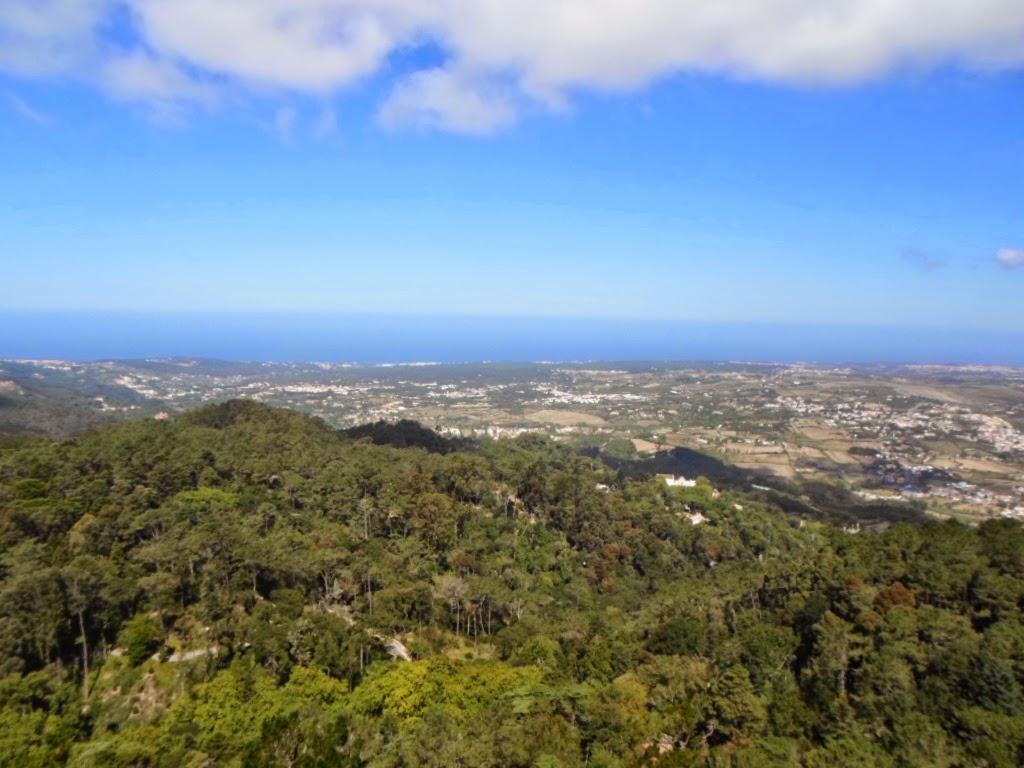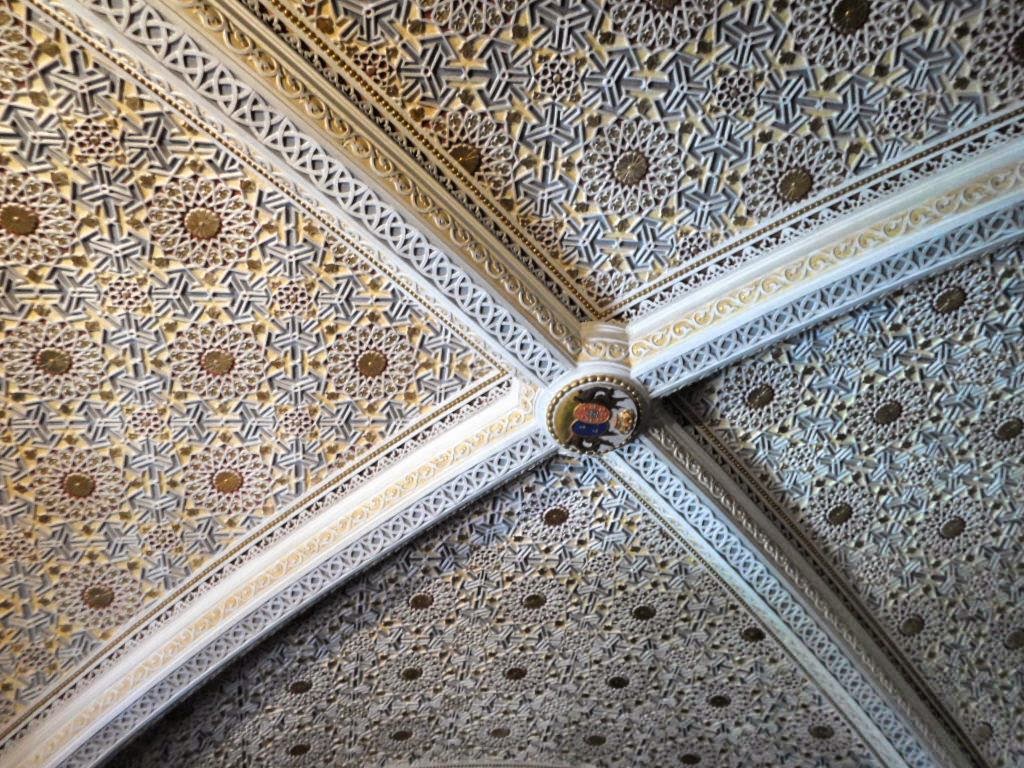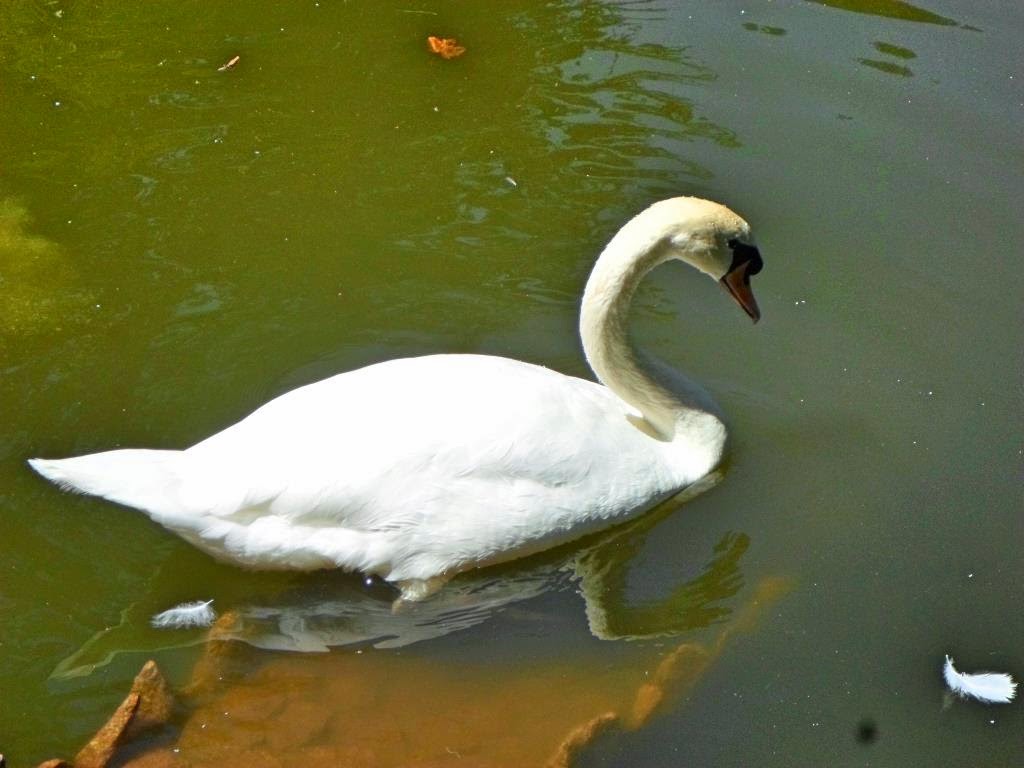My morning walk up the hill to Pena Palace was rather pleasant as most people either chose to ride the public bus #434 (5 euros) or drive up to the site. There were long lines to purchase tickets at the main entrance of the Park and when I saw the crowd of passengers alighting from the bus and rushing to the ticket booths, I was glad that I walked up the hill and avoided them.
I purchased a package deal to see the Park and Palace of Pena and the Moors Castle for 18 euros, which represented a savings of 3.50 euros (this versus buying the tickets separately ~ a single adult ticket to Pena and the Moors Castle was 14 euros and 7.50 euros respectively). I decided to visit the Moors Castle the next day as I was mentally saturated by the end of the day.
When I first saw Pena Palace up close, I was surprised by its cheesy, tacky theme-park look. The brochures promoted it as a "fine example of 19th-century Portuguese Romanticism". Err, not! It was hard to imagine how former Portuguese royals could have lived there. I thought the Palace facade looked just fine the way it was, without the new paint jobs. They really should re-do their restoration work on the facade because the modern paints were harsh and poorly blended in my humble opinion.
Facade aside, I thought the palace interiors were beautifully decorated; I especially liked the Queen's bedroom and dressing room. The builders of Pena were Queen of Portugal, Dona Maria II, and her husband King-Consort, Don Fernando II, who was often known as the Artist-King (he was formerly from Germany). After the Queen died in 1853, he married the Countess of Edla in 1869 and built a chalet for her in the Park.
Other royals who lived in the Palace included Don Pedro V and Dona Estefania (from 1853-1861), Don Luis I and Dona Maria Pia (1861-1889), Don Carlos I and Dona Amelia (1889-1908), and Don Manuel II (1908-1910).
The Park of Pena occupied almost eighty-five hectares of natural landscape and historic gardens that were carved and created by Don Fernando II himself. My blood pressure seemed to have dropped several notches when I strolled in the Park's natural environment; it was really soothing, calming, and decompressing.
Above: This chapel was originally part of the early monastery of Hieronymite monks
Above left: King Don Carlos' art studio, equipped with canvases painted by the King (who reined from 1889 to 1908); Above right: Chambers of King Don Carlos I
Above right: The King's bathroom
Above: Manueline Cloisters ~ originally part of the 16th-C monastery (that Don Fernando II had purchased from to build Pena)
Above: The Queen's bedroom
Above: The Queen's office
Above left: The Queen's Terrace; Above right: So glad I beat the crowds of people waiting in line to enter the Palace
Above left: This sun-dial was fitted with an automatic cannon that would sound at midday
Above left: Kitchen ~ an exhibition of the cookware used at the time to prepare banquets; Above right: A turret ~ minaret with Moorish dome
Above right: Portugal's flag and the Coat of Arms of D. Fernando II of Portugal and Saxe-Coburg-Cotha
Above left: Main facade tiles ~ geometric Moorish pattern
Above: Cruz Alta ~ carved in stone as intertwined branches at the highest point on the Sintra Hills at 529 m, this was a replica of the original cross that fell during a lightning storm; the original was raised by D. Joao III in the 16th-C
Above right: Saint Catherine's Heights ~ Queen Dona Amelia's favorite viewpoint; the "Queen's Throne" was carved in the rock
Above left: View of Pena Palace from Saint Catherine's Heights
Above right: Lake of the Shell
Above: Queen's Fern Valley
Above right: Fountain of the Small Birds ~ Islamic style pavilion; its spherical dome was inscripted in Arabic
Above right: Plate of the day ~ fried fish fillets with chips, rice, and salad (6 euros) and a glass of white wine (3 euros)
Previous post: Sintra, Portugal (August 13, 2014)













































































































































No comments:
Post a Comment